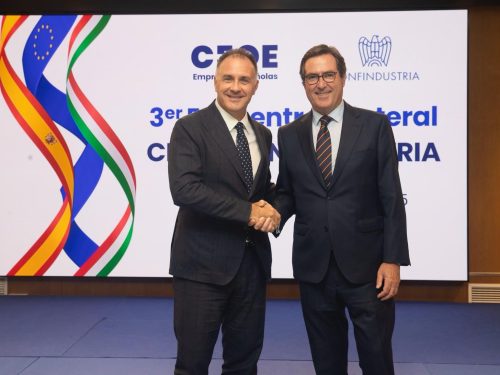News
Share on
"The business world is under great pressure at the moment due to various factors ranging from shortages and rising prices of raw materials, to expensive energy, to a significant rise in financial costs for newly taken out mortgages caused by rising interest rates. In this context, increase labour costs without a corresponding increase in productivity, risks creating a short-circuit which could have important and possibly even irreversible consequences for certain production sectors. The problem must be addressed through the use of targeted tools." So The Vice President for Labour and Industrial Relations Maurizio Stirpe in an interview with The Press intervened in the debate on the purchasing power of wages and the demands of trade unions. "If the price crisis is considered to be cyclical in nature - he pointed out - I believe it should be addressed with the system of timed refreshments, such as the Governo is already doing. If, on the other hand, the problem were of a structural nature, instruments would have to be created that do not increase labour costs and avoid penalising the competitiveness of companies."
And on the measures to be put in place, Stirpe clarified: 'ua reduction of the tax wedge to the benefit of workers in order to guarantee them greater purchasing power is the right path at this stage. It is not, however, to reason only about second-level contracts, i.e. company contracts, as has been proposed by trade unions, if nothing else because it would leave millions of workers uncovered. I would call this an instrumental position, based on a culture that is not one of dialogue but one of conflict. Whereas instead I believe there is every room for find a solution to the problems without changing either the contractual models or the inflation indices they refer to."
And on the request to overcome the indice Ipca (harmonised consumer price index) because it would not take into account energy price increases Stirpe explained that this is not correct: 'AWithin the Ipca index, energy prices account for 9% and only sudden changes in oil prices are neutralised', said. Energy costs are therefore calculated, but are spread over a period of time plus long so as to avoid peaks and troughs. It is called the harmonised index precisely for this reason. Not only that, let me remind you that the HICP basket includes goods that already incorporate increases in energy prices. And then let me say that when agreements are made, they have to be respected.." In this regard, with reference to Bombardieri's threat to withdraw his signature from the Factory Covenant, clarified: 'a this statement, I reply that one would then have to ask what the consequences would be. NI don't want to make any polemic, I just say that dismantling the pact would certainly not achieve a better result."
Sharing the concern for the impact on consumption of the price increase Stirpe, however, pointed out that '.the tools we have devised provideoa fair and balanced solution. The defiscalisation and decontribution of both first and second level contractual increases, for example, can also be calibrated according to the time frame in which these increases occur. The 75% of the Confindustria contracts were just renewed efor the next renewals, according to Stirpe 'one could also think about defiscalising or decontributing the increases on the first level, only to return to normal taxation when the price flare-up dies down. If these increases were not temporary the only way remains to work on wage cost items. However, in this way a cut in the tax wedge would become inevitable."
Always on the wedge the Vice President noted that "then this moment, the government is allocating a significant amount of resources for relief. So why not think about more structural and broader measures by thinking about the tax wedge, instead of a short-term view?" he proposed, recalling that "a solution can be found with the tools we have available, whereas in these conditions Increasing labour costs without a corresponding increase in productivity is not a viable proposition."
















